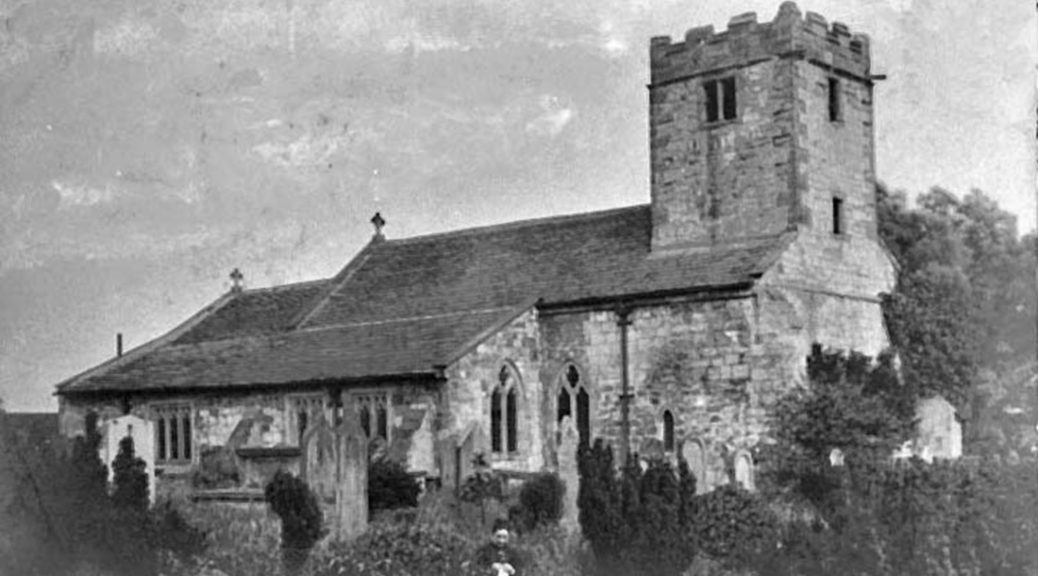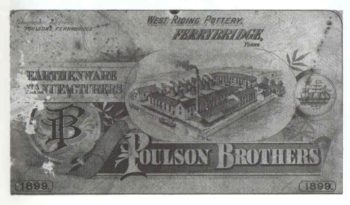
John Walden Poulson – the Wastrel, my great grandfather – as the oldest son of Edwin Llewellyn Poulson should have taken over the family pottery business in Ferrybridge, Yorkshire.
Edwin Llewellyn and his older brother Thomas had built up the West Riding Pottery business over their lifetimes from what their father, Walden Poulson left when he died in 1861. As a rough gauge of how things had grown, Walden willed less than £300 (about £45,600 in 2025 terms) in 1861, but when his oldest son Thomas died in 1893, he left £6,650 (just over £1 milion).
John Walden started as a 19 year old clerk – at least that was what his first marriage certificate showed…
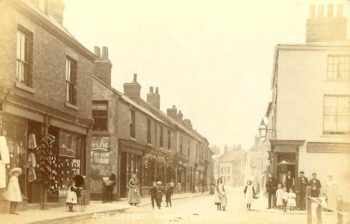
At 21, in the 1891 census, John Walden is a married father of one and Pottery Manager – living in the house next door to his father Edwin and stepmother Emily (plus his two younger half-brothers). John Walden isn’t yet on the voter rolls (that comes in 1903) so I assume his father owned the property until then.

I think it’s a safe conclusion that John Walden’s marriage to Mary Ann – Polly – Shepherd wasn’t planned. It took place on Christmas Day 1889 in the Ferry Fryston Parish Church – who gets married on Christmas Day? That church, shown above in its original location (it was moved in the 1950s because it was always flooding), is in Ferrybridge, where the Shepherds lived; John Walden’s family lived in Knottingley.
Edwin and family were all Wesleyan Methodists – labeled non Conformists as the Church of England is the established religion in the UK – and would probably have preferred the wedding at the Wesleyan Chapel (something legally possible after a Marriage Act in 1836; previously it was Church of England or else!).
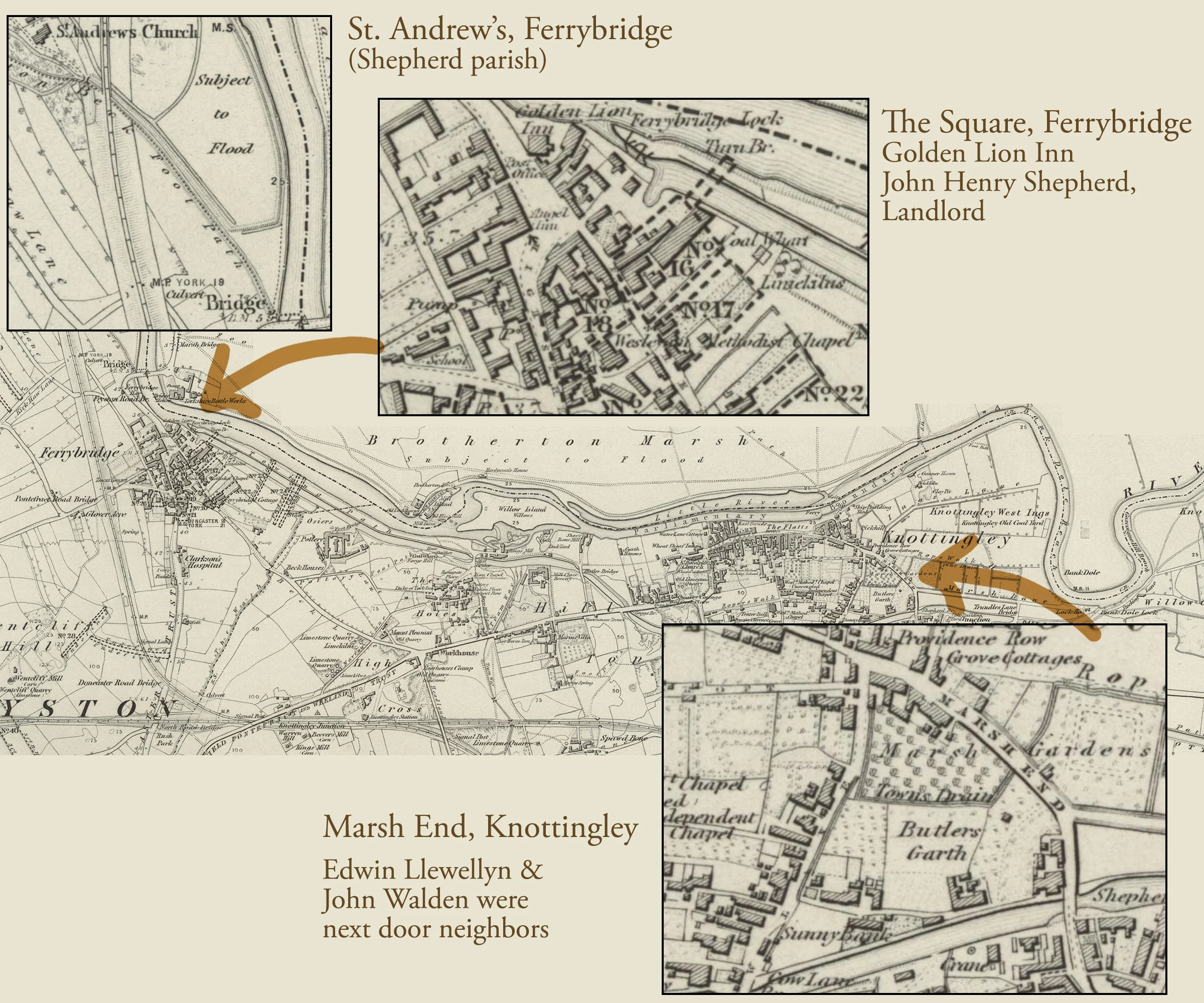
The witnesses on the marriage certificate were Mary Ann’s father, John Henry Shepherd, a horse dealer and inn manager, and Mary Ann’s cousin Eliza Ann Shepherd (Mary Ann’s mother had died earlier that year). No indication anyone from John Walden’s family was there.
The two lovebirds were minors – John Walden was 19 (would turn 20 in January) so had another whole year until he was legally an adult, yet the marriage certificate said he was 21. Mary Ann had just turned 20 the previous month, but she had her father’s permission – probably his insistence! The marriage was by license, not by the publishing of banns (which takes three weeks).
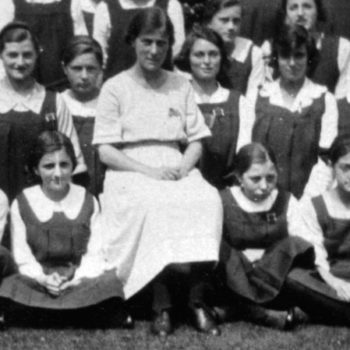
The final clue is that their first child, Emily Muriel, was born May 7, 1890, only four or so months after the wedding. I’d guess the most likely course of events was that John Henry found out his daughter was pregnant and wanted to make sure the young scoundrel did the right thing by his daughter. The lie about John Walden’s age probably means that they expected Edwin would not give his consent to his under-age son-and-heir’s marriage.
When I first unearthed this story ten years ago, I assumed the Shepherd and Poulson families didn’t know one another, but in digging through newspaper articles about town events, I realized I was probably wrong – both families were involved with local civic institutions. Knottingley and Ferrybridge are very close by and were small towns of about 4,000 and 1,000 people. I think the Poulsons probably were the more “senior” of the two, but both families were on the voter rolls (you had to be a property owner to vote back then). Since these blogs were first written, a distant Shepherd relative pointed out the irony of a forced union of two families on opposite sides of the politics of the day. John Henry a staunch Conservative and Edwin Llewellyn a committed Liberal. In 1889 John Walden’s Uncle Thomas and Mary Ann’s father John Henry were both on the Ferry Fryston school board. And then there was the Knottingley Horticultural Society show back in the Summer of 1889…
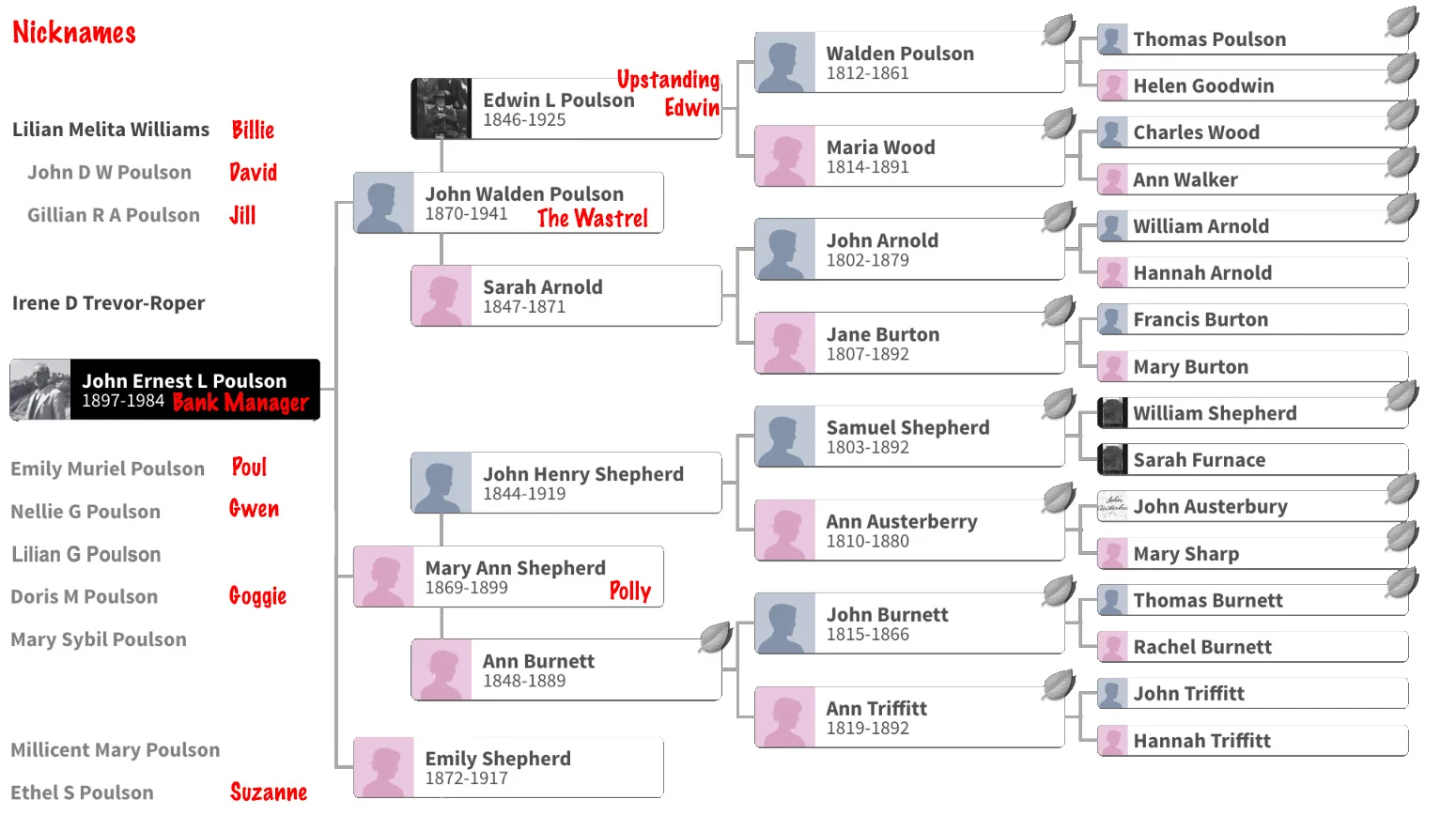
It’s probably impossible now to know if 19 year old Polly Shepherd attended the July Knottingley Horticultural show at which her father, John Henry Shepherd, was a judge of the sporting events, but the Goole Times notes that John Walden Poulson was there with his father Edwin – who was one of the “ladies and gentlemen of the district” listed in the newspaper. Two of Edwin’s ponies won first and second place in the pony trotting competition that John Henry Shepherd judged! John Walden was listed in the sporting events as coming second in the one mile bicycle race.
Whether the two first met at the show or not, it would have been around early August that Polly became pregnant. It’s a rather charming and romantic thought that two young people met and fell in love at a summer fair where everyone was enjoying a sunny afternoon. The newspaper account does say it was held “…’in the picturesque field of Mrs. Howard…” and that sports events were in “splendid” weather!
Who knows what sort of row there was when Edwin found out about the marriage and impending grandchild, but it didn’t appear to alter grooming John Walden for his role in the business. From snippets about Edwin’s role as a magistrate, he seems like a very practical and down-to-earth sort, so I can imagine him getting angry but quickly moving on.
Newspaper accounts of John Walden representing the pottery at meetings, getting elected to the Ferry Fryston School Board in 1892, opening a new Wesleyan Church school, being a founder of a new pottery company with his father and soon-to-be brother-in-law (Isaac Burdin) and so on suggest that not much changed regarding his role in the family business.
Emily Muriel’s birth certificate says that Mary Ann was the one who made notification of her birth and Marsh End (Knottingley) was the residence. June 9th is the notification date, a month after Emily’s birth. That’s not enough of a delay to make Emily conceived in wedlock, but I wonder why it wasn’t done sooner and by a family member – had John Walden wandered off briefly?
A second daughter, Nellie Gwendoline, was born July 1891. I assumed for a long time five years elapsed before the next child, but in 2022 (while researching Emily Muriel) I located records for their third daughter, Lilian Gertrude. Lilian was born in 1893 but died in 1896, shortly after the birth of daughter number four, Aunty Goggie (Doris Marguerite). I had assumed the huge political scandal and lawsuits over the Pontefract Election in 1893 was behind a childless period. That dust-up got national attention for John Walden and his father –Pontefract was a swing district and the Liberal they helped get elected was thrown out because of the “irregularities” of the campaign. At least no one went to jail as a result of this incident!

Cricket was (amazingly – I’ve never enjoyed it) a popular local sport and two of Edwin’s sons show up on several occasions in newspaper reports about how the Knottingley team did in local leagues. One newspaper article about a political meeting described John Walden as”…the popular captain of the cricket team…”. Thomas Llewellyn Poulson, John Walden’s younger half brother, also played cricket and there are several reports over these years of both of them on the Knottingley team. As I have no photos of John Walden, Thomas stands in for them both (and the two photos I have of Thomas are from cricket matches). I think I can see a family resemblance between Thomas and my grandfather.
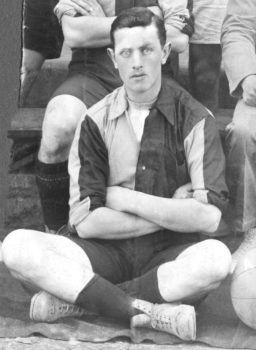
Newspaper stories about business, politics and cricket make it clear John Walden stayed in the area in the 1890s and early 1900s (unlike ~1908-1916). He and Polly welcomed Doris Marguerite 14 May 1896, and 15 June 1897, Gamps, my grandfather, their only boy – John Ernest Llewellyn Poulson – was born. Barely two years later, 18 May 1899, Polly’s last child, Mary Sybil, was born. It was sadly a birth with complications and Mary Ann Poulson died following 9 days of “confinement peritonitis” and exhaustion.
At the time it wasn’t remarkable when a woman died of infection following childbirth, but it’s odd that Mary Ann was at her father-in-law Edwin’s home at Dresden House, and it was Edwin who reported her death. I had originally thought the baby was stillborn, but Mary Sybil lived for just a year, dying 23 May 1900 of “acute broncho-pneumonia” at her grandfather’s house. Edwin apparently had a special relationship with this granddaughter; in his will (1925) he left his son Charles (i.e. not Mary Sybil’s father, but he’d cut John Walden out completely by then) a portrait of Mary Sybil plus a memoriam ring, and his daughter Mary Ellen another portrait of Mary Sybil. There were no mentions of Lilian Gertrude in his will, so perhaps Mary Sybil spent a lot of time with grandfather Edwin after her mother’s death.
I can’t rule out that John Walden was at home dutifully caring for the four children ages 9, 7, 3 and 2, but I’d guess their servant Annie Hyde was probably left with that job. Or one of Mary Ann’s sisters might have stepped in, perhaps Emily? In any event I have to wonder if my young grandfather, about to turn two years old (on June 15th), had any clue about his mother’s death, but probably only the two oldest sisters really understood.
One last hint at family relationships between Shepherds and Poulsons is how Polly’s death notices appeared in a local paper, The Yorkshire Post, on May 30th. There were two, one from her father and one from her husband (or at least his family):

John Walden Poulson has so many more stories – the next one will be of his next marriage, in 1901. Nothing unusual in a young widower remarrying, but as with his first wedding, it’s not the what, but the who and the where that make it intriguing!

